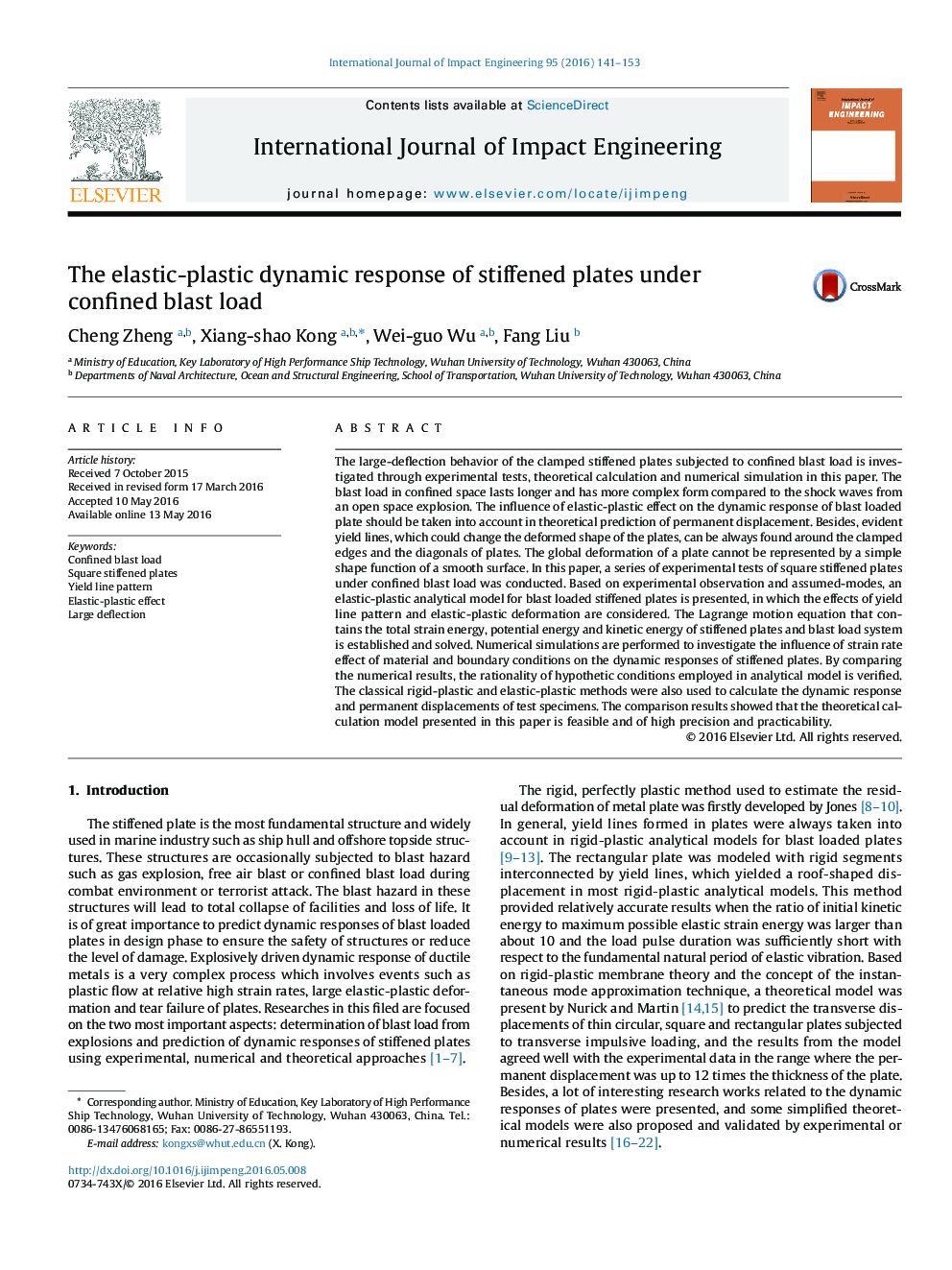| Article ID | Journal | Published Year | Pages | File Type |
|---|---|---|---|---|
| 776310 | International Journal of Impact Engineering | 2016 | 13 Pages |
•Experiments of dynamic response of plates under confined blast load were conducted.•An analytical method is presented to predict dynamic responses of stiffened plate under blast load.•A new deformation shape function of stiffened plate considering the effect of yield lines is proposed.•Rapid and accurate assessment of dynamic response of plates under confined blast can be achieved.
The large-deflection behavior of the clamped stiffened plates subjected to confined blast load is investigated through experimental tests, theoretical calculation and numerical simulation in this paper. The blast load in confined space lasts longer and has more complex form compared to the shock waves from an open space explosion. The influence of elastic-plastic effect on the dynamic response of blast loaded plate should be taken into account in theoretical prediction of permanent displacement. Besides, evident yield lines, which could change the deformed shape of the plates, can be always found around the clamped edges and the diagonals of plates. The global deformation of a plate cannot be represented by a simple shape function of a smooth surface. In this paper, a series of experimental tests of square stiffened plates under confined blast load was conducted. Based on experimental observation and assumed-modes, an elastic-plastic analytical model for blast loaded stiffened plates is presented, in which the effects of yield line pattern and elastic-plastic deformation are considered. The Lagrange motion equation that contains the total strain energy, potential energy and kinetic energy of stiffened plates and blast load system is established and solved. Numerical simulations are performed to investigate the influence of strain rate effect of material and boundary conditions on the dynamic responses of stiffened plates. By comparing the numerical results, the rationality of hypothetic conditions employed in analytical model is verified. The classical rigid-plastic and elastic-plastic methods were also used to calculate the dynamic response and permanent displacements of test specimens. The comparison results showed that the theoretical calculation model presented in this paper is feasible and of high precision and practicability.
